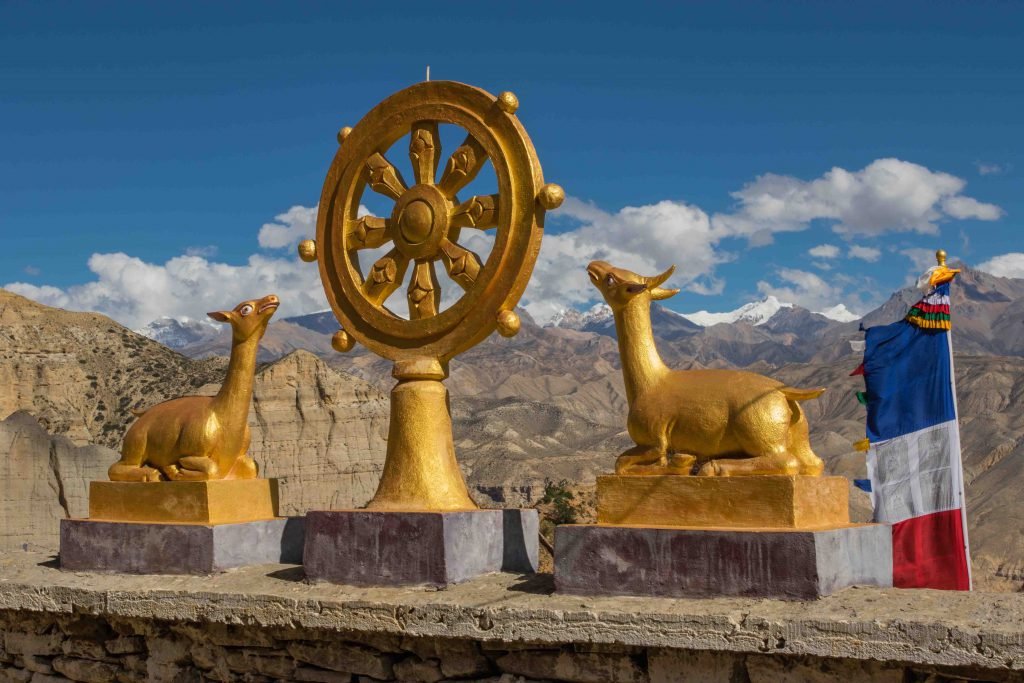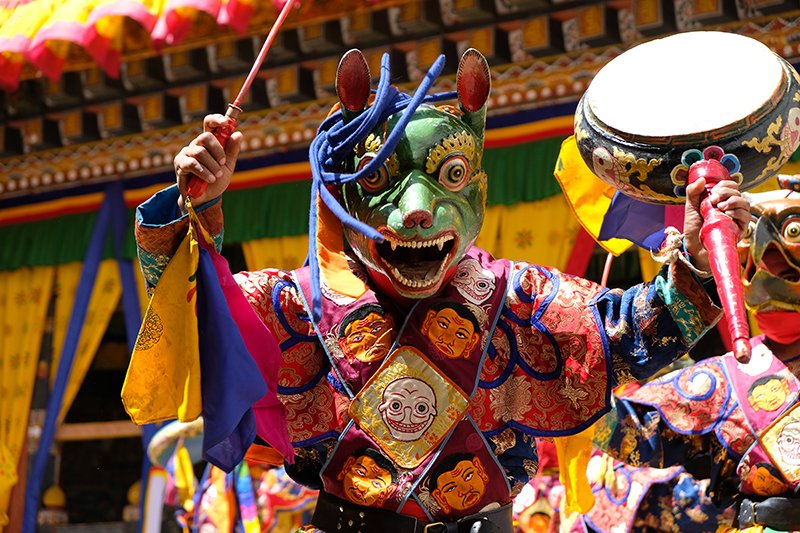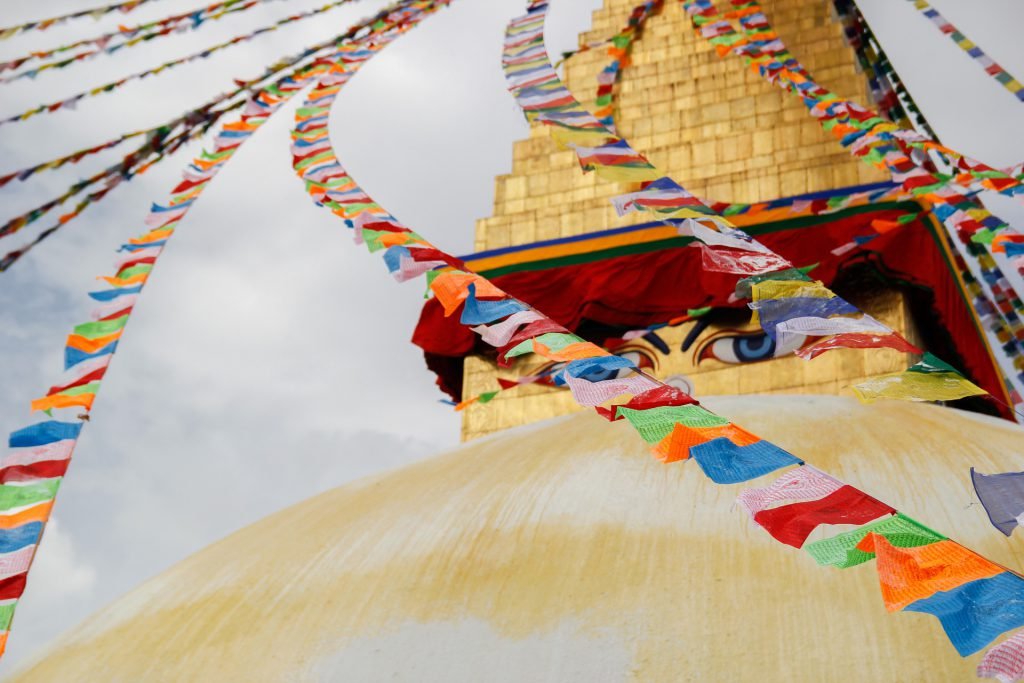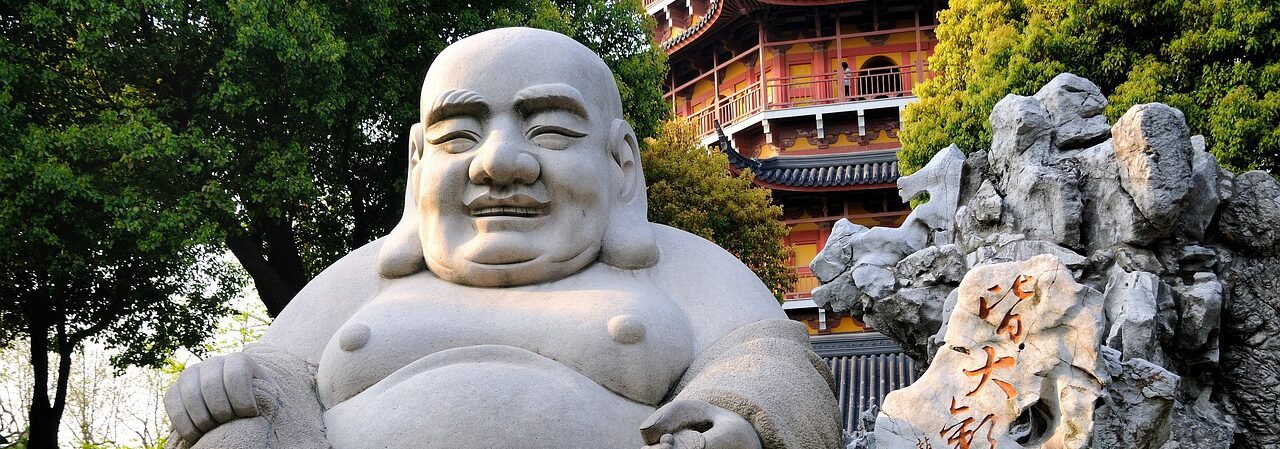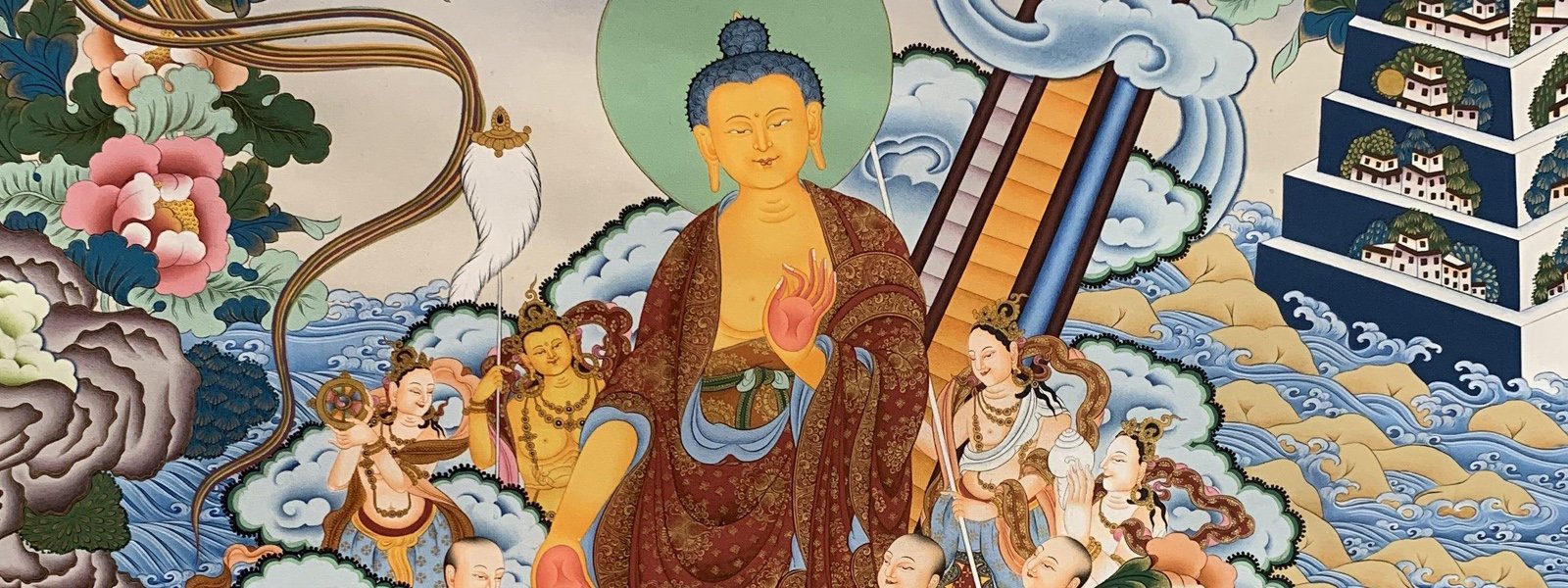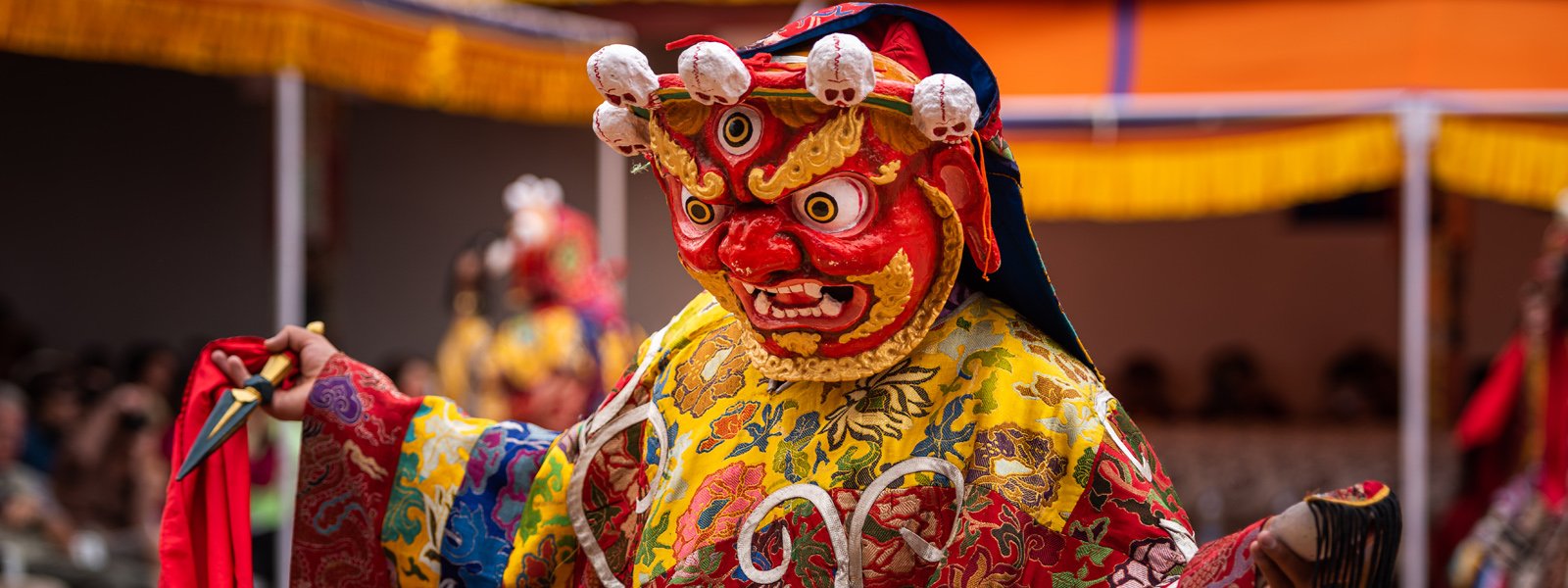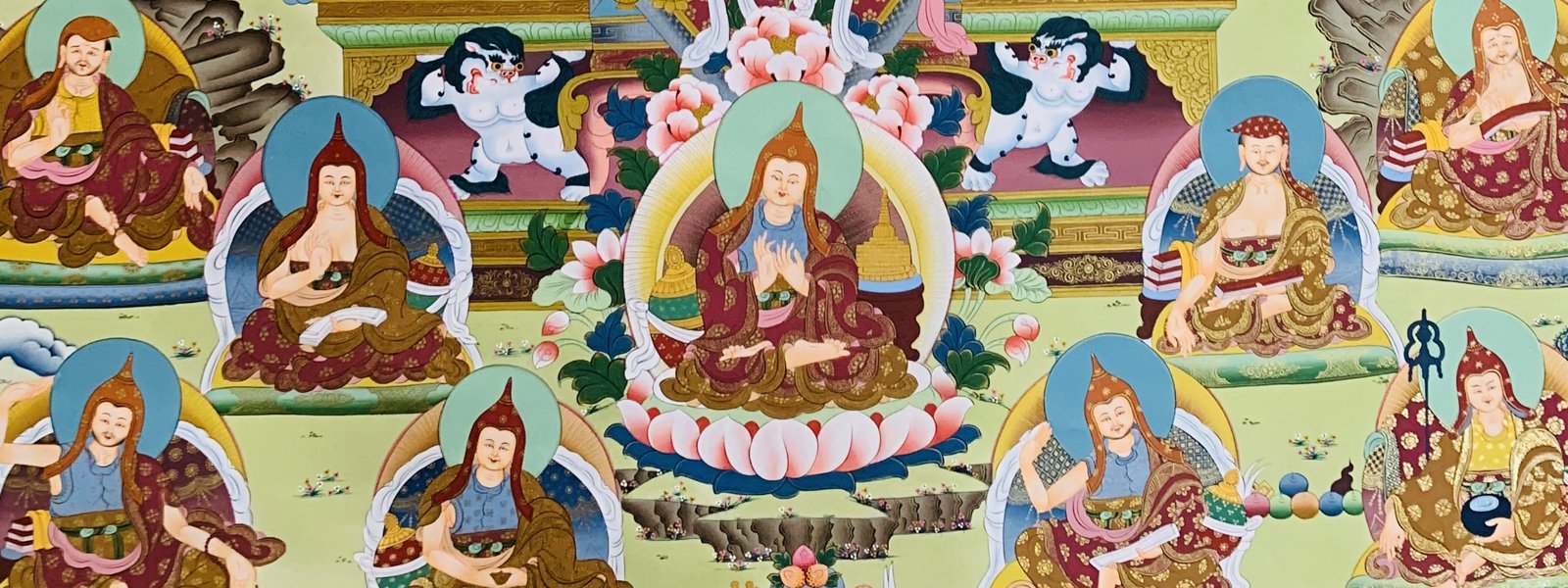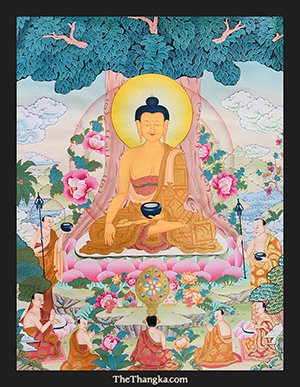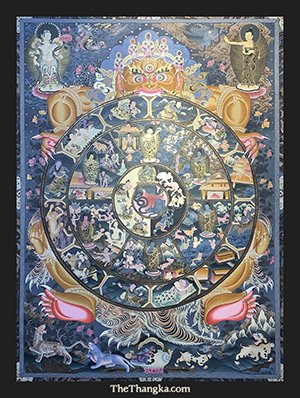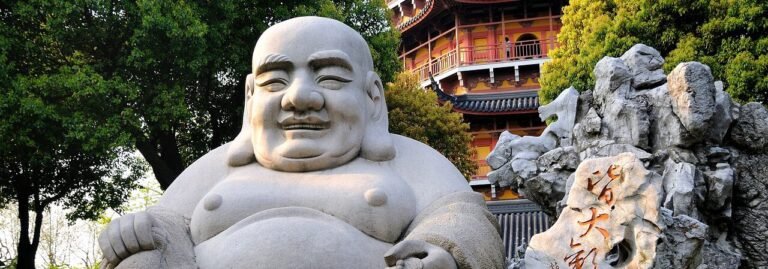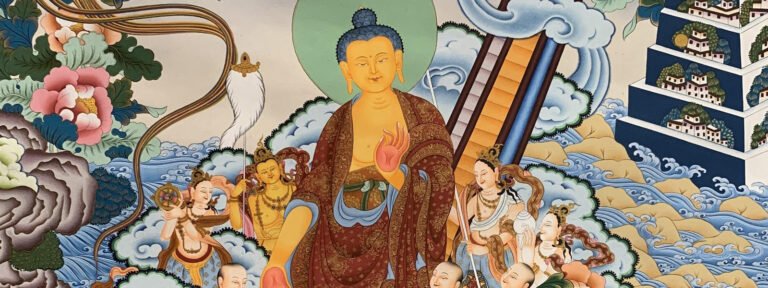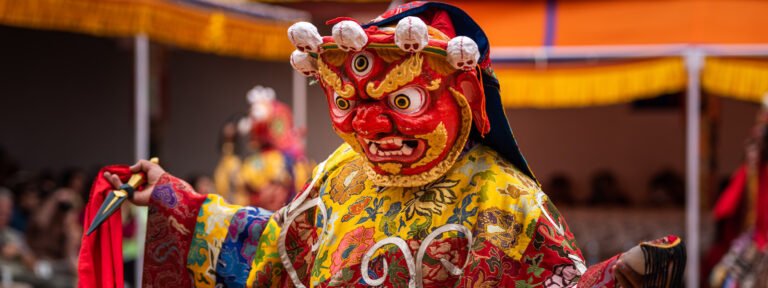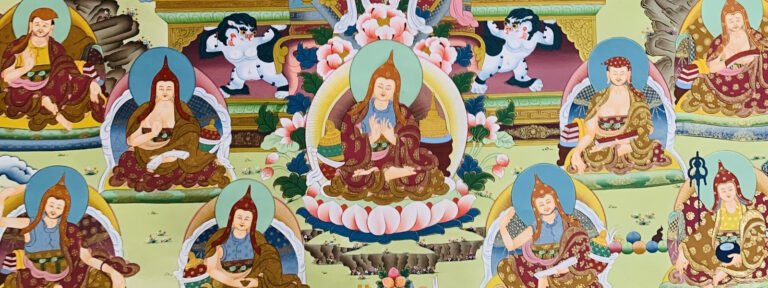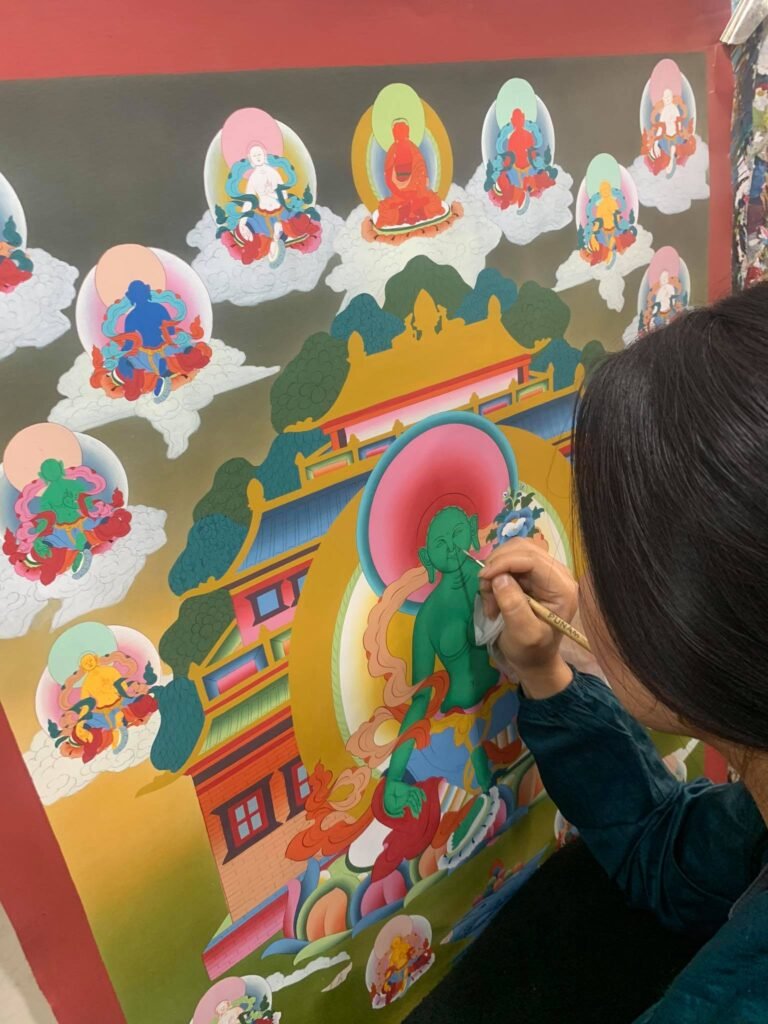The four harmonious friends story is a Tibetan tale from Buddhist mythology that is frequently depicted in both Bhutanese and Tibetan artwork. The story first appear in the Vinayavastu འདུལ་བའི་གཞི་ (“The Chapters on Monastic Discipline”) that details different aspects of monastic life.
The story teaches of the wisdom that can be learned from our elders, as well as the benefits we can enjoy when working together and living in harmony.
The Four Harmonious Friends (or Brothers) Story
The story tells of an elephant, monkey, rabbit, and bird who are trying to work out who is the oldest by comparing themselves to a large tree that they are standing next to.
The elephant says that the tree was already fully grown when he was young, the monkey remembers the tree being small when he was young, the hare says that the tree was a mere sapling when he was young, and the bird claims to have excreted the seed from which the tree grew.
The bird teaches the animals that if they work together, they’ll be able to share and enjoy the fruits from the tree.
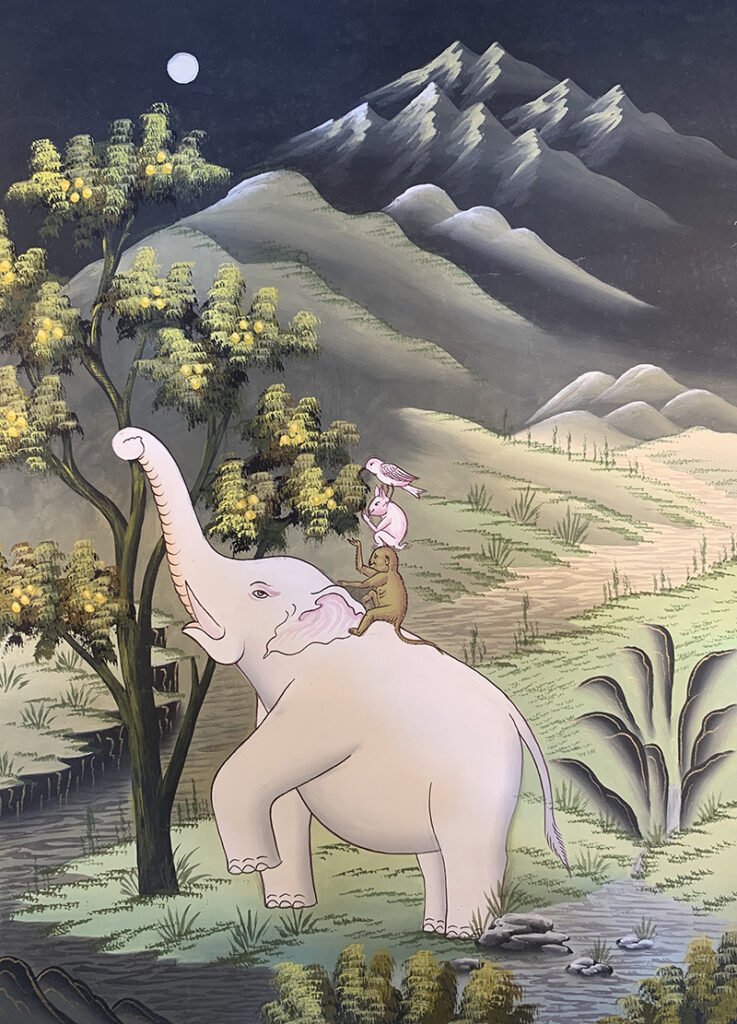
The morals of the story
Living in harmony and having respect for seniority are the morals of the four harmonious friends story. Each of the animals represents a different habitat of the animal world – the sky, the trees, the ground, the underground – and the story brings these four elements together to show how each is needed for different reasons.
Whilst the bird plants the seed, the rabbit waters it, followed shortly by fertilization from the monkey and ultimately, the tree being guarded by the elephant.
Although the bird is the oldest, he is depicted in the story as not being ashamed to ask for help. When the tree was merely a plant in the ground, the bird (being unable to fly) was able to scratch to find food. But as it grew, he required the help of the rabbit to reach the food. Whilst the rabbit ate what was on the ground, the bird could reach the growing tree for food by standing on the rabbit’s back.
As the tree continued to grow, the two animals required help from the monkey – who climbed the tree to drop fruit to the ground for the others to eat, but he wouldn’t reach the higher branches. Ultimately they needed help from the elephant, who was able to reach the highest branches of the tree to collect food for the smaller animals.
The moral of the story teaches that we must both respect the bird for his age as well as his willingness to ask for help. However, it also teaches that no matter our age, we each have an important role to play in living harmoniously.
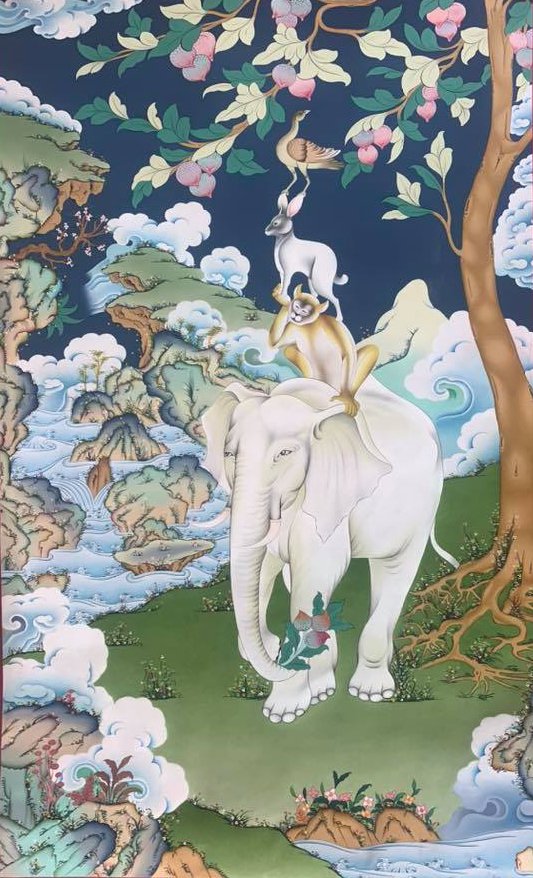
The four harmonious friends in art
In artwork, the story is commonly depicted as an image of the animals standing one on top of the other – each animal carrying the older animals on his shoulders. This serves as a reminder to show respect for your elders. As well as this, by working as a team and standing on each other’s backs, the animals are able to reach the first branch of the ‘banyan tree’.
It is said that where the story is depicted in a painting and displayed, virtues will be increased by 10 – leading to auspicious events and an increase in the respect we have for our elders.
See thangka paintings of The 4 Friends by TheThangka.com
Sources:
